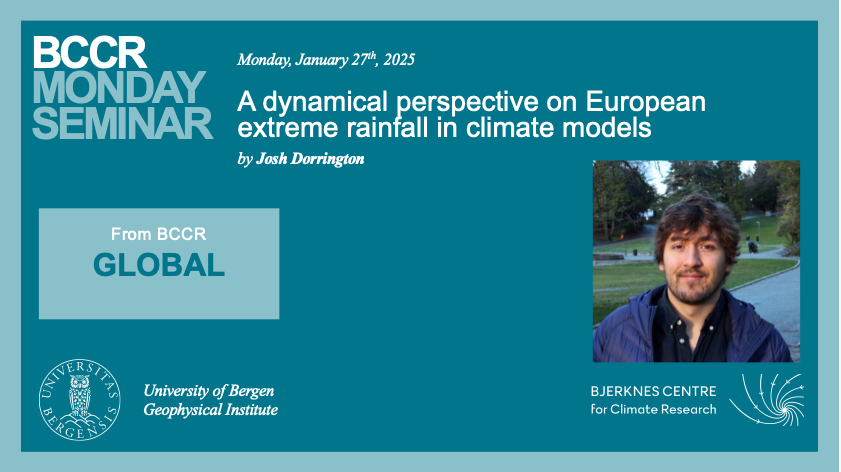
Abstract
Can climate models (in this case, the CESM2 large ensemble) accurately model European rainfall? If so, do they do it for the right reasons? If not, why not? And what does this all mean for the reliability of projected trends in rainfall? Finally, can we (and should we) use dynamically-informed ML methods to 'correct' these climate projections?
I'll discuss these questions in this talk, which represents part of an ongoing multi-model analysis of extreme rainfall over Europe, incorporating global earth system models and regional convection permitting simulations, described for separate regions and parts, but rarely are all components of the circulation followed at once. Lagrangian trajectories have here been used to divide the North Atlantic Ocean Circulation into four different pathways. In the boundary between the Subpolar and Subtropical Gyres, we show that the northward flowing waters exchange heat and salt with the water originating from the subpolar regions. This subsurface water mass exchange takes place in the first 1000 m and is a key piece of the puzzle of how the Atlantic Meridional Overturning Circulation transports heat and salt.
About the speaker
Josh is an MSCA postdoctoral fellow at the Geophysical Institute, working on the dynamics of extreme rainfall in a changing climate. He is part of the global group at the BCCR.
He studied for his PhD at the University of Oxford, with Tim Palmer and Antje Weisheimer, and then worked as a postdoc with Christian Grams at the Karlsruhe Institute of Technology for two years.
The seminar will take place in Bjerknes lecture room (4th floor, room 4020) on January 27 at 11:00 AM. For those not able to attend in person, it will be possible to join on zoom.
